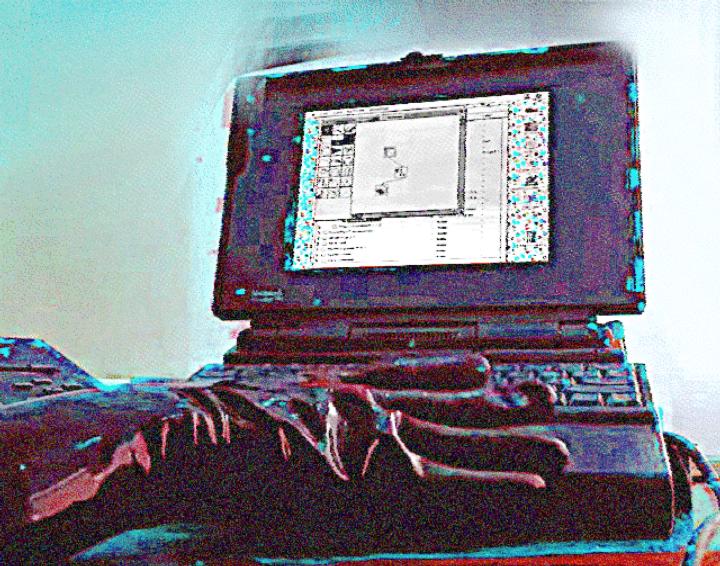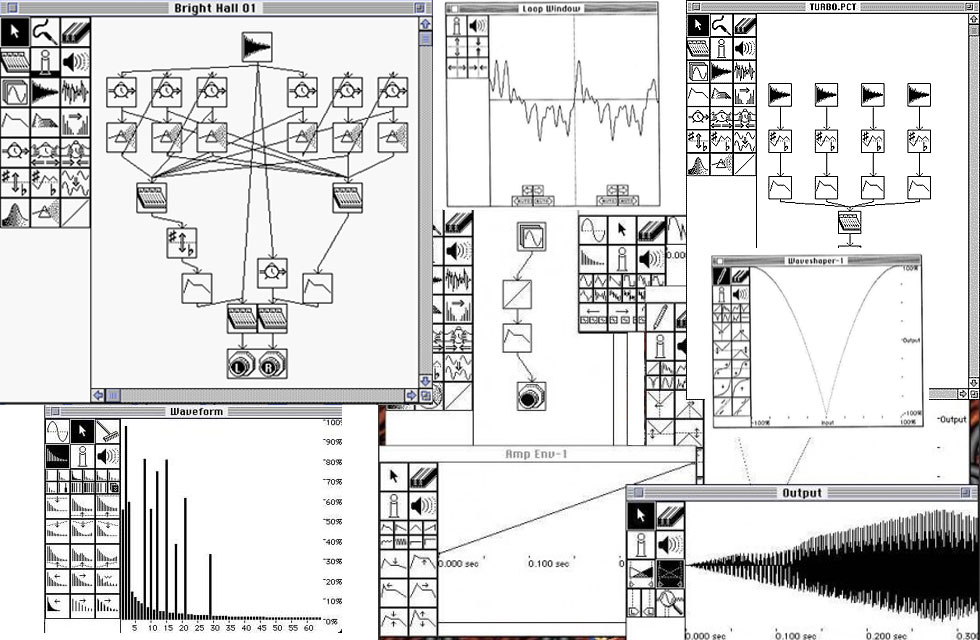Computer Music Chronicles: The 90's pt.3
US Older Music Machines & the People Who Still Use Them 18/01/24

|
Atari, Amiga, PC, Mac. These were your main choices as a music maker in the 90's, if you needed a computer for sound generation, MIDI shenanigans or the nascent art of direct-to-disk recording. You might be aware that I'm an Amiga fan, so I have a heavy bias towards that machine, but the reality is that each platform had something special to offer. This was bound to happen, because the computer landscape of the 80s & 90s was filled with absolute geniuses who managed to work miracles with limited hardware designs.
Apple during the 90's, wow. The tech giant went through a period of incredible change within this decade. The 90's began with 68k CPU's and John Sculley, and ended with RISC PowerPC architecture and Steve Jobs. Jobs, exiled from the company for a number of years (making pretty NeXT Cubes) returned to an Apple that was struggling to find identity under the weight of boundless, impenetrable product lines and an official clone program that was actually damaging their bottom line.
There's a lot to chew over (sorry) when it comes to Apple and 90's music making, so I've picked 3 things that I found cool, and you'll hopefully find cool too.
1. Digidesign Sound Accelerator
Digidesign developed a lot of stuff for Mac in the 80's & 90's, in fact, I'd go as far as saying that the platform would not be widely used in the industry without them.
We all know I'm Amiga-centric, but I'll happily admit that by the late 80's, the machine's native 28Khz sampling rate couldn't cut it for professional level studio work, but then again, earlier Fairlights couldn't either! Crisp, hi-fidelity 16-bit sound was in, and Digidesign's Sound Tools offered 2 channels of 48Khz recording and playback, with sampling time limited to the size of your hard disk!
The 1989 hardware/software combo featured a AD-in box (with the requisite inputs on quarter-inch jacks) and an expansion card featuring an onboard DSP. Used in conjunction with Sound Designer II, the engineer could:
- Record with rates from 8Khz-48Khz
- Cut, Copy, Paste, Reverse, Silence & Trim
- Fade in and out
- Normalise
- Phase Invert
- Parametric EQ
- Merge (Crossfading)
- Mix up to four Soundfiles
- Timestretch
- Auto-loop
Their 1990 release Deck, offered 4 tracks of digital playback & mixing AND non-destructive effects (EQ, Stereo-ise, Delay, Mod-Delay, Chorus) via the same hardware, bargain! We were well on our way to the modern, DAW workflow.
2. Turbosynth

It's non-realtime, but it's a lot of fun! Trent Reznor was a big fan of Digidesign's 1988 modular software environment, so much so that he'd sometimes praise other products for their similarity to Turbosynth. He reportedly said that the Kurzweil K2000 was like a "real-time Turbosynth", for instance. So what is it? Following on from their earlier Softsynth, Turbosynth can either generate it's own additive spectra, using a series of interpolating frames (I've made basic waveforms or lovely wavetables in this way) or it can really FSU on your imported AIFF samples!
Be it spectra or sample, you can route your initial sound through various modules via virtual patch cables. You have noise, waveshaper, filter, timestretching, delay, pitchshifter, diffuser, resonator, mixer, modulator, and multi-segment pitch, filter and amplitude envelope generators, phew!
I run Turbosynth on a Powerbook 180C, a 1993 model with more juice than '88 Macs; so it's quite pleasant to use. Hit the space bar and your sound briefly renders and plays back. Then dump it to your Emax, put on your leather jacket and let's go!
You can also run Turbosynth on later, PowerPC Macs under System 9 thanks to number 3's amazing tech:
3. Mac 68K Emulator
In 1994, Apple shipped their first computer with Power PC chips. Their previous big-hitter processor, the 68040, was supported up until System 8.1 in January 1998. The transition could have been a painful one for Mac users, as the two chip families ran on completely incompatible architectures (we won't get into CISC vs RISC here, don't worry!) with totally different instruction sets.
Luckily, a genius coder named Gary Davidian wrote an emulator that started and stopped automatically (the system featured a series of traps that recognised 68k code) meaning that you could run classic software (like Turbosynth) with no noticeable issues. The emulated software might not perform as speedily as a native, PowerPC version, but hey, good enough, right?
You can listen to an interview with Gary here:
If you'd like to read through a treasure trove of Music/Computer related articles, then head on over to Mu:zines and feast your eyes on their collection: https://www.muzines.co.uk/features/8
Posted by MagicalSynthAdventure an expert in synthesis technology from last Century and Amiga enthusiast.
< More From: MISCELLANEOUS
- 4 Software Synths that Became Hardware! 02-May-24
- The Tunes in Tokyo Train Stations 30-Apr-24
- 5 Ingenious Ways Synth-makers Saved Memory 26-Apr-24
- 3 of the Synth World's Most Outrageous Easter Eggs! 23-Apr-24
- 5 Firmware Updates that Totally Changed the Game 09-Apr-24
Even more news...
Want Our Newsletter?
More...
The Avila Brothers talk about their journey to the recent Super Bowl Halftime Show






